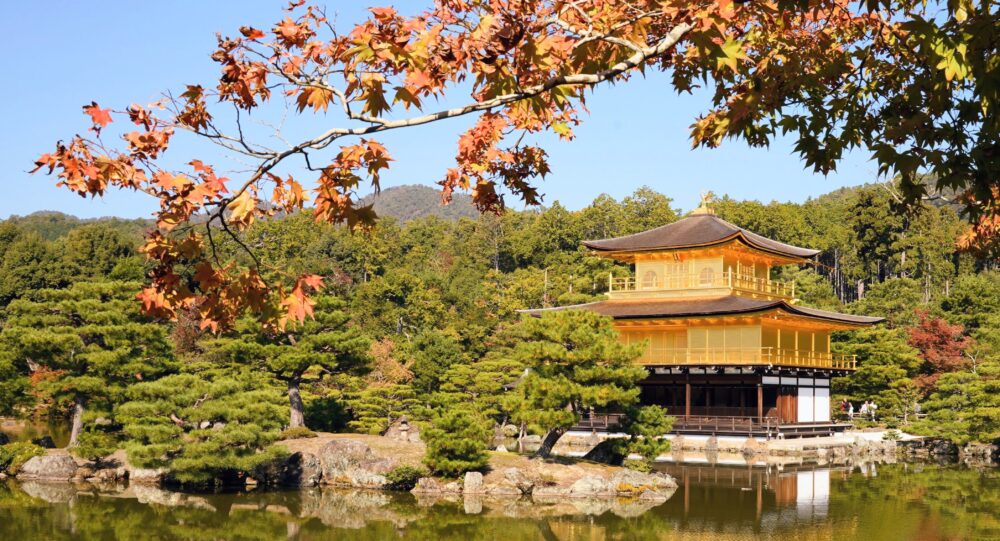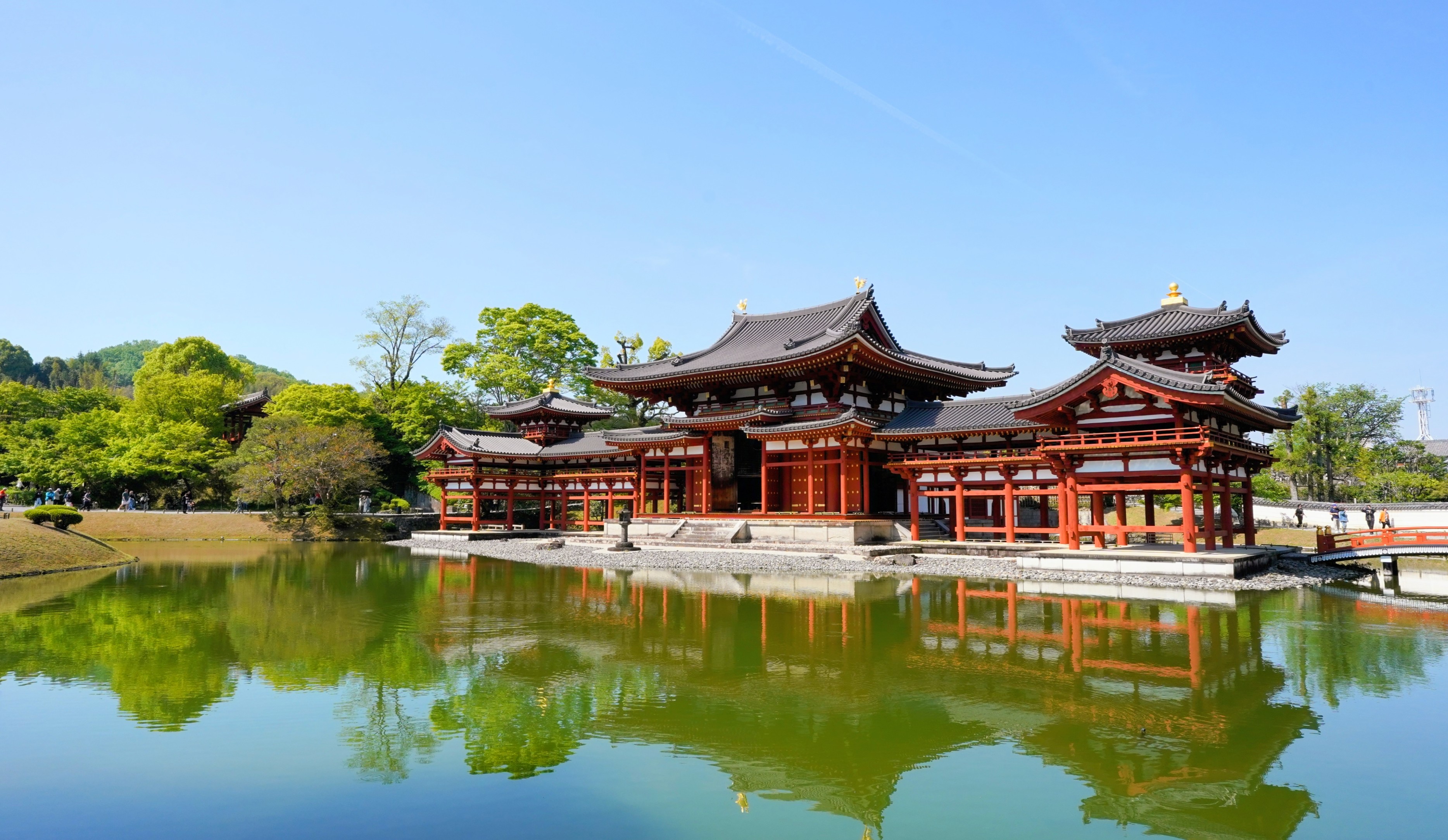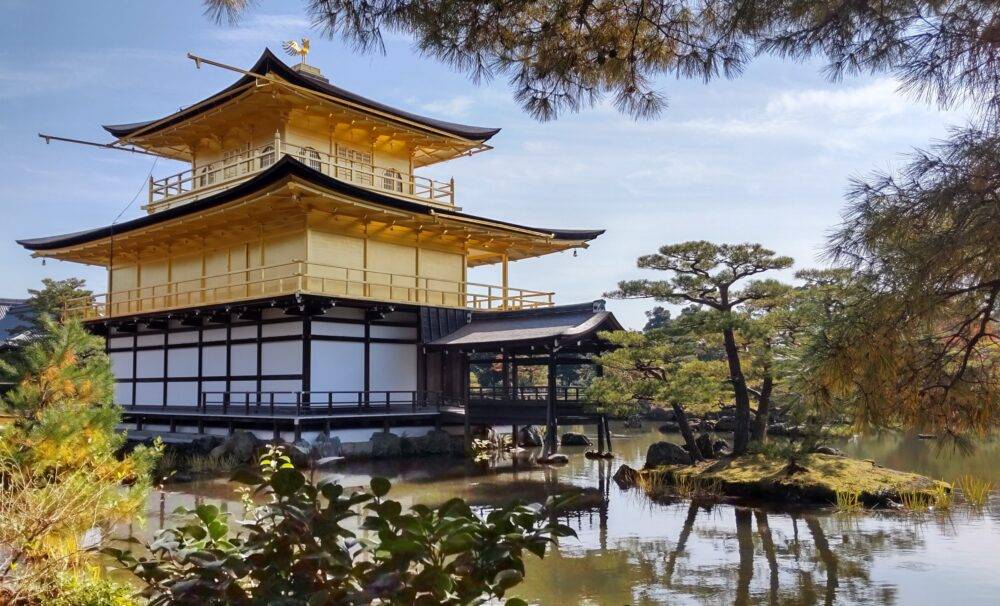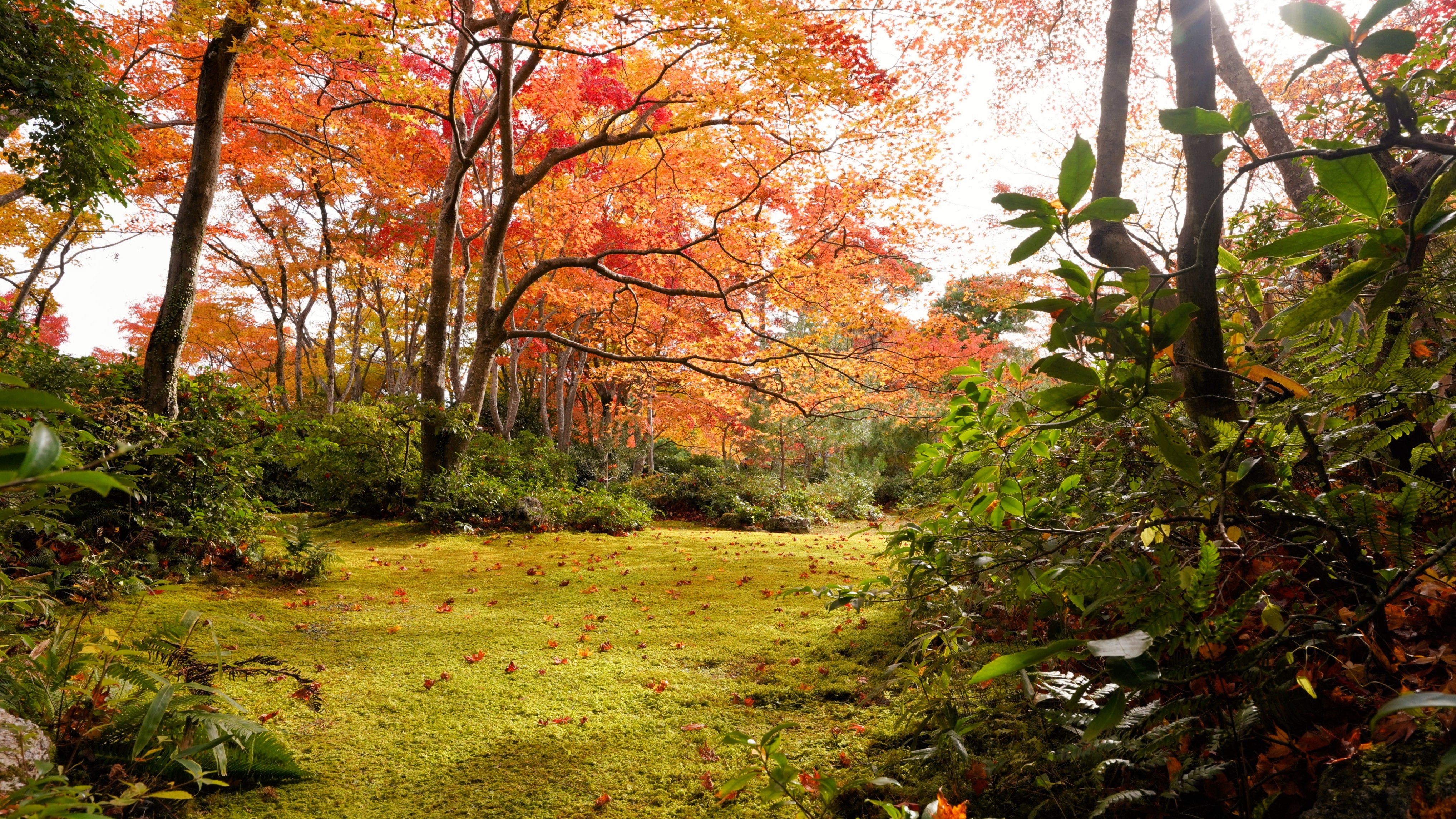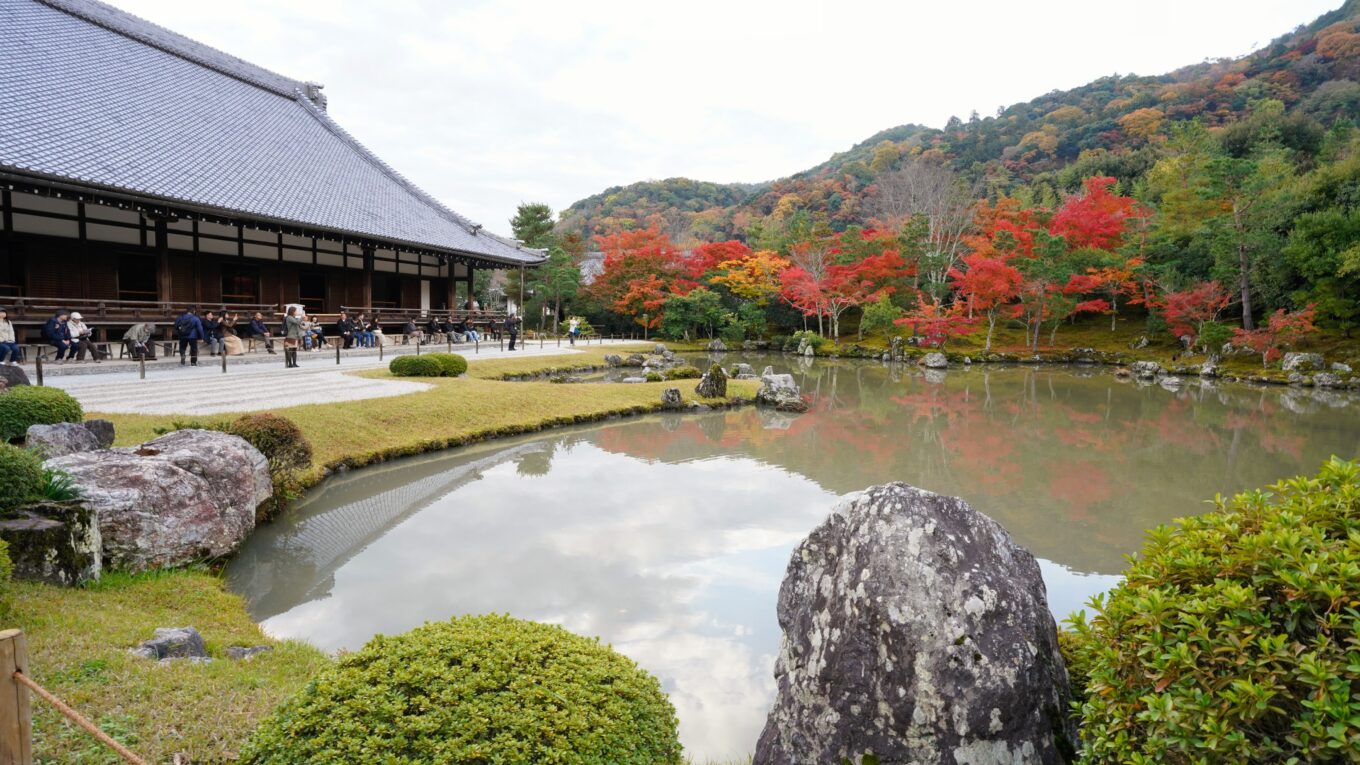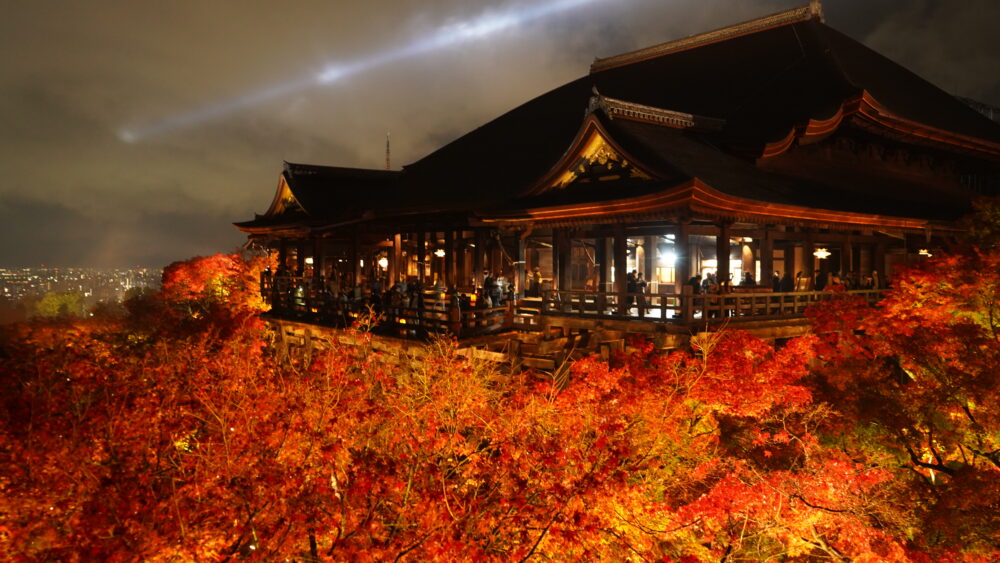Kifune shrine and Kawadoko : The Best Time to Visit in 2025
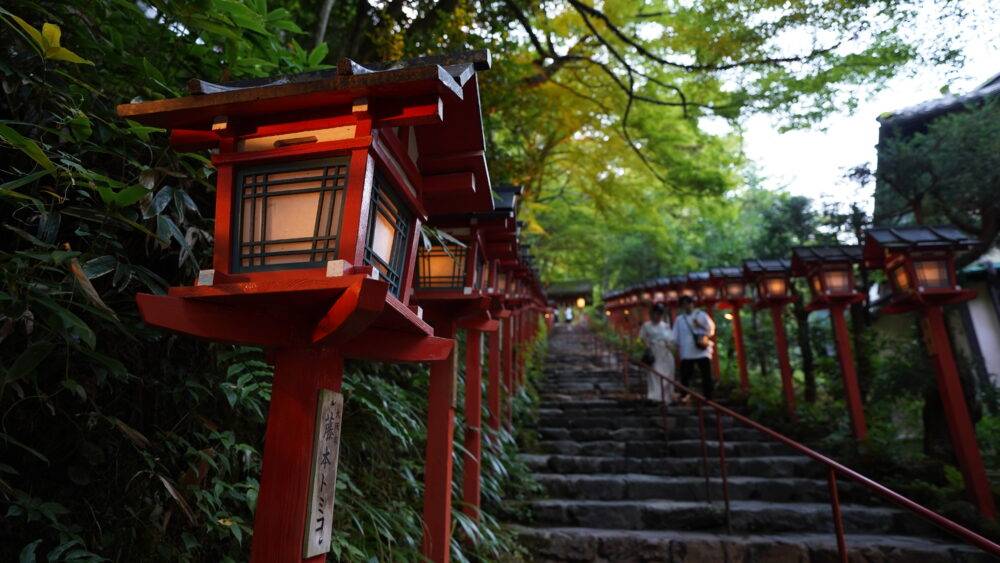
Kifune Shrine, located on the river side of Kifune, is a popular tourist destination that attracts many visitors. A popular course is to visit the shrine and the restaurant to order a kaiseki course in Kawadoko.
History
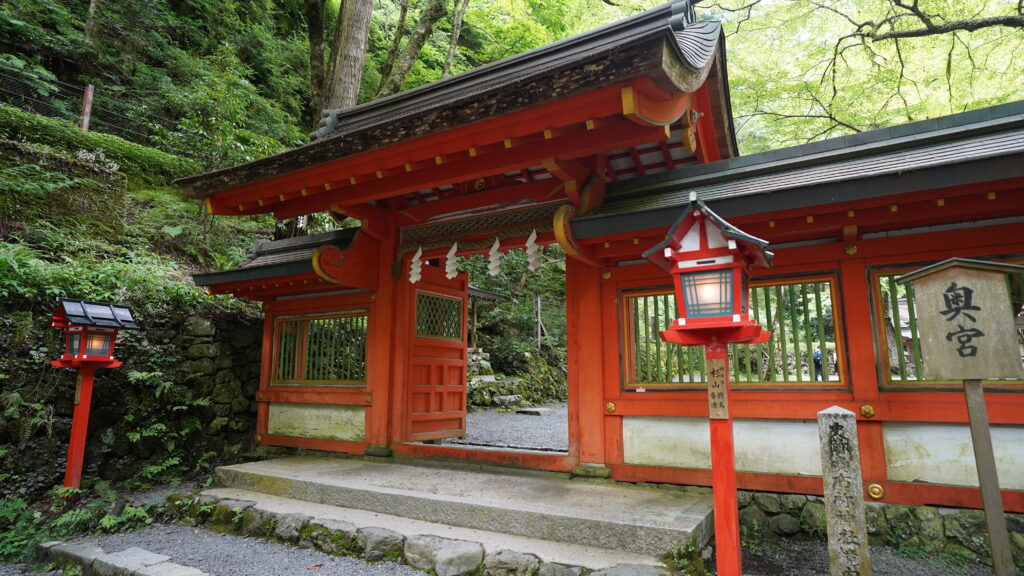
Kibune Shrine, located along the Kibune River in the Kurama Mountains, is a revered sanctuary dedicated to the deity of water. As the head shrine of approximately 500 branch shrines throughout Japan, Kibune Shrine holds a significant position in Japanese tradition.
Legend has it that the shrine originated around 400 A.D.when Tamayori-hime the mother of Emperor Jimmu, traveled in a yellow boat from the Yodo River in Osaka to the headwaters of the Kibune River. Here, at the source of the water, the inner shrine was established.
In 1046, a flood caused considerable damage to the main hall in the rear shine. As a result, the main hall was moved to its present location in the main shrine in 1055.
Features
Kibune Shrine is divided into three main shrines: Hongu(main shrine), Yui-no-Yashiro, and Okumiya(rear shine).
Hongu(main shrine)

Hongu is the first shrine you’ll encounter as you walk from Kifuneguchi Station, where the base of the mountain is located. The crimson lanterns that line the stone steps on either side of the path to Hongu have become a popular photo spot (pictured above). The lanterns are lit from sunset until 8:00 p.m., attracting visitors well into the evening hours. The Hongu enshrines Takao-no-kami, the dragon deity who presides over water.
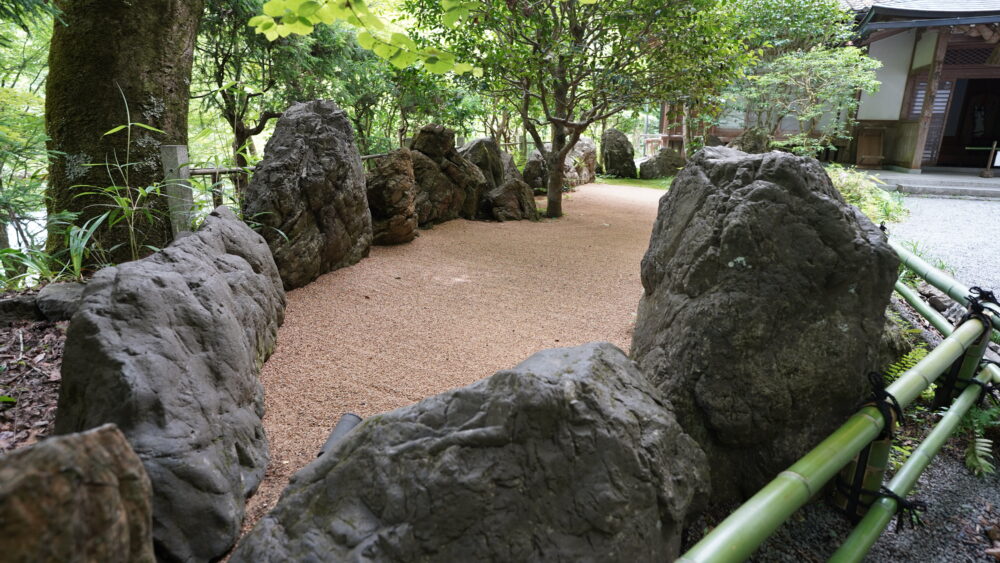
The shrine also features Amatsu-Iwasa-ka garden, a Japanese dry garden designed in 1965 by renowned Japanese garden designer Mirei Shigemori. This garden is characterized by its use of Kibune stones quarried from the Kibune River and its bed of reddish-brown rusty gravel. The arrangement of the stones resembles a boat, with the camellia tree in the center representing the sail. This design is inspired by the legend of the founding of Kibune Shrine, which tells of the journey of a yellow boat up the Yodo River in search of the water source. Despite its small size, Amatsu-Iwasa-ka exudes an air of serenity and mysticism.
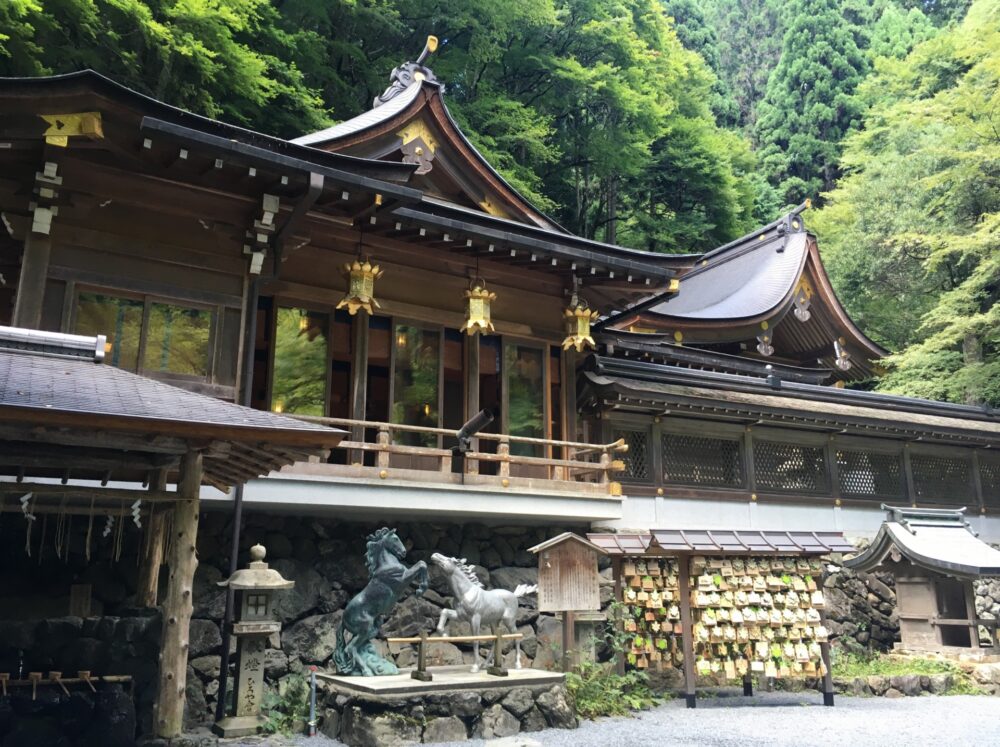
Within the shrine grounds, two statues of horses, one black and one white, stand as wish symbols of a traditional ritual. In the past, devotees would offer a black horse to ask for rain and a white horse to ask for rain to stop. These statues serve as reminders of this ancient practice.
Continuing up, you’ll reach the main wooden hall, where you can experience the uniqueness of the Mizumikuji (fortune-telling paper). This special type of paper is dipped in water, revealing the message as the ink runs and spreads.
Yui-no-Yashiro
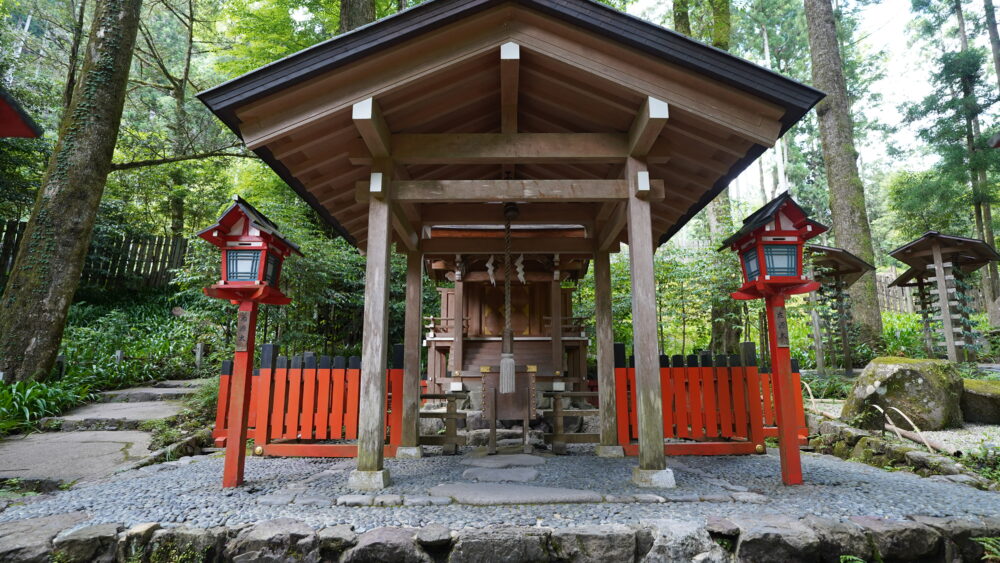
Yui-no-yashiro, just a five-minute walk from Honmiya, is dedicated to Iwa-nagahime-no-Mikoto, the deity of matchmaking. Visitors can seek blessings for various connections, including romantic relationships, interpersonal bonds, business partnerships, career opportunities, and academic pursuits. A unique practice at the shrine involves tying “musubi-bun” (knotted paper wishes) to the shrine’s presence, symbolizing the creation of lasting connections.
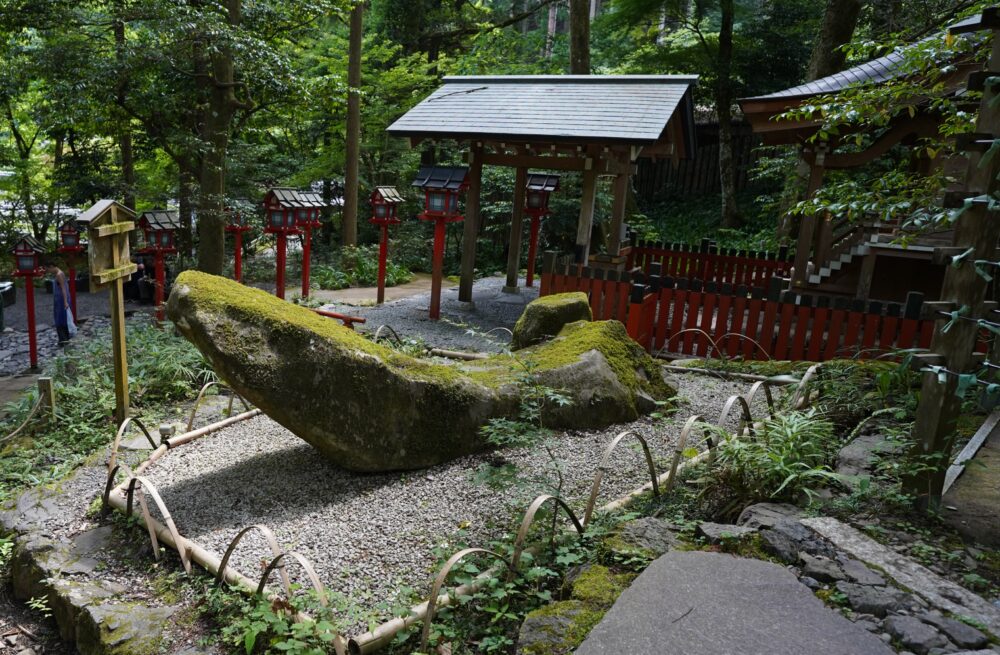
Within the shrine grounds is Amano-Iwafune, a colossal boat-shaped rock weighing approximately 13,200 pounds. Discovered in the depths of Mt. Kibune, this sacred rock holds great symbolic significance. Its shape, reminiscent of a ship, echoes the legend.
Okunomiya(rear shrine)
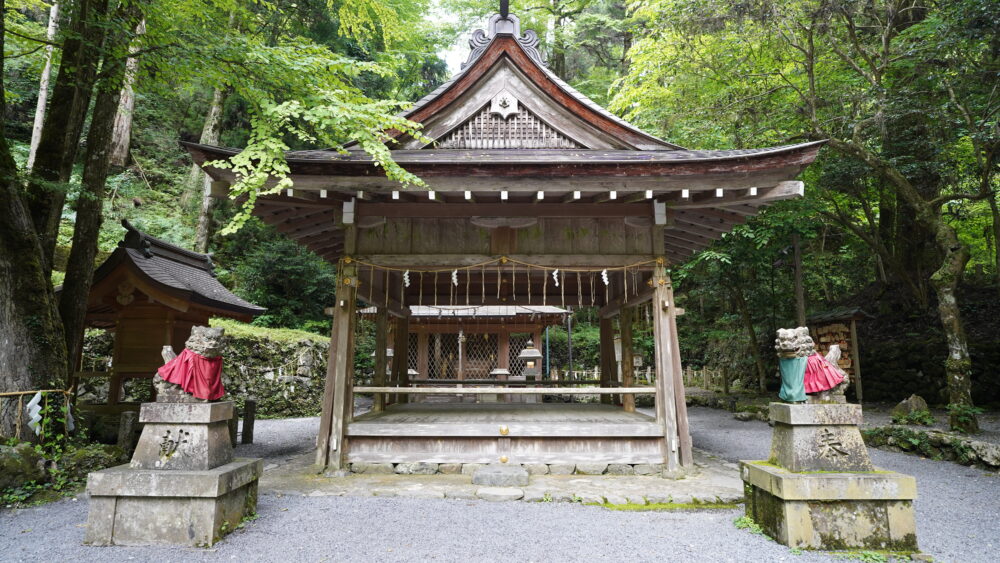
Okumiya, the innermost shrine of Kibune Shrine, is a sacred site steeped in history and spiritual significance. Nestled deep within the embrace of the forest, Okumiya marks the place where Kibune Shrine was first established.
Legend has it that beneath the main hall of Okumiya is a huge vertical hole known as the “Dragon’s Hole”. This mythical opening is said to connect to the realm of dragons, adding to the shrine’s aura of mystery and spiritual power.
How to get to kifune shrine
Kibune Shrine can be reached in several ways, but the most recommended route is to take the Eizan Electric Railway from Demachiyanagi Station to Kibuneguchi Station and then transfer to a bus to Kibune.
There are bus routes from Kyoto Station to the Kibune bus stop, but they can be crowded, so it is generally better to take the train as far as possible. Also, some people walk from Kibuneguchi Station to Kibune Shrine, but the road is narrow and there is no sidewalk, so it is recommended to take the bus from Kibuneguchi to Kibune.
Kawadoko(River dining)
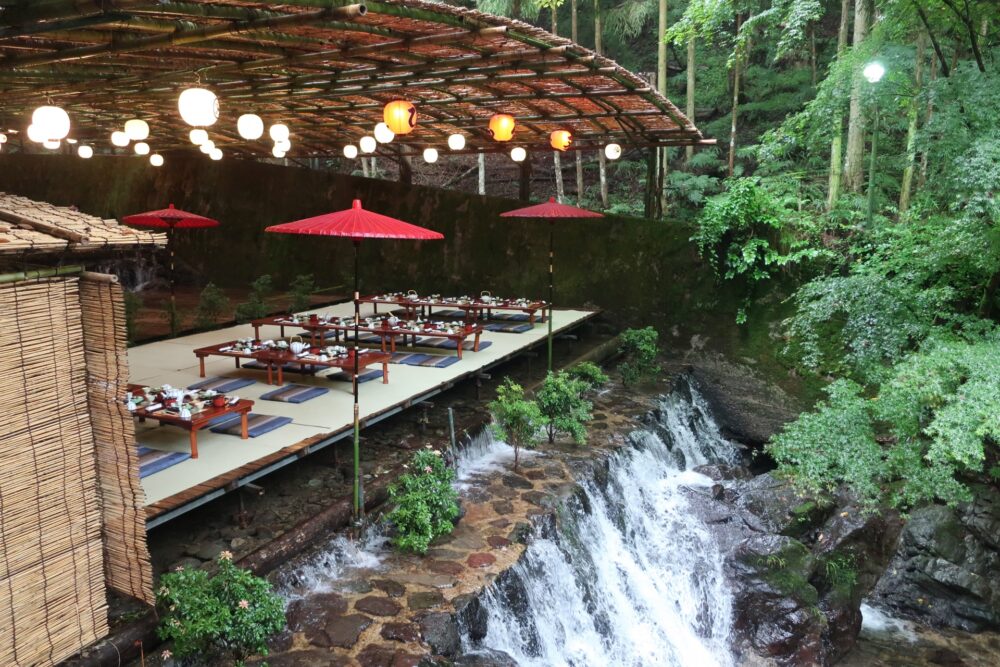
The Kibune area, located along the river near the Kifune Shrine, offers a unique culinary experience known as “Kawadoko”. These platform-style restaurants, built over the Kibune River, provide a captivating setting to enjoy traditional Japanese cuisine while immersed in the tranquil embrace of nature.
Dining at Kawadoko is a seasonal event, typically available from roughly May through September. During this time, the verdant landscapes of the Kibune are at their peak, providing a breathtaking backdrop for your culinary adventure.
Due to the immense popularity of kawadoko dining, advance reservations are highly recommended. Reservations can be made online.
List of Kawadoko restaurants (English text)
Information
Day Time
Open hours
| Period | Time |
|---|---|
| May 1st to November 30th | 6:00a.m. to 8:00p.m. (The Reception opens from 9:00a.m. to 5:00p.m.) |
| December 1st to April 30th | 6:00a.m. to 6:00p.m. (The Reception opens from 9:00a.m. to 5:00p.m.) |
Night illumination : Tanabata Festival Bamboo Ornament
| Period | Time |
|---|---|
| July 1st to August 15th | From Sunset to 8:00p.m. |
Entrance fee
free
Nighttime Illumination : Fall illumination
| Period | Time |
|---|---|
| November.9th to 24th | Sunset to 8:30 p.m. |
Entrance Fee : Free
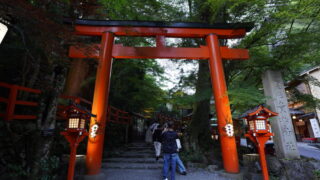
Adress
Main shrine
180 Kuramakibunecho, Sakyo Ward, Kyoto, 601-1112
Link
Official website
Kifune shrine(English text)
